Luminescence Dating Laboratory
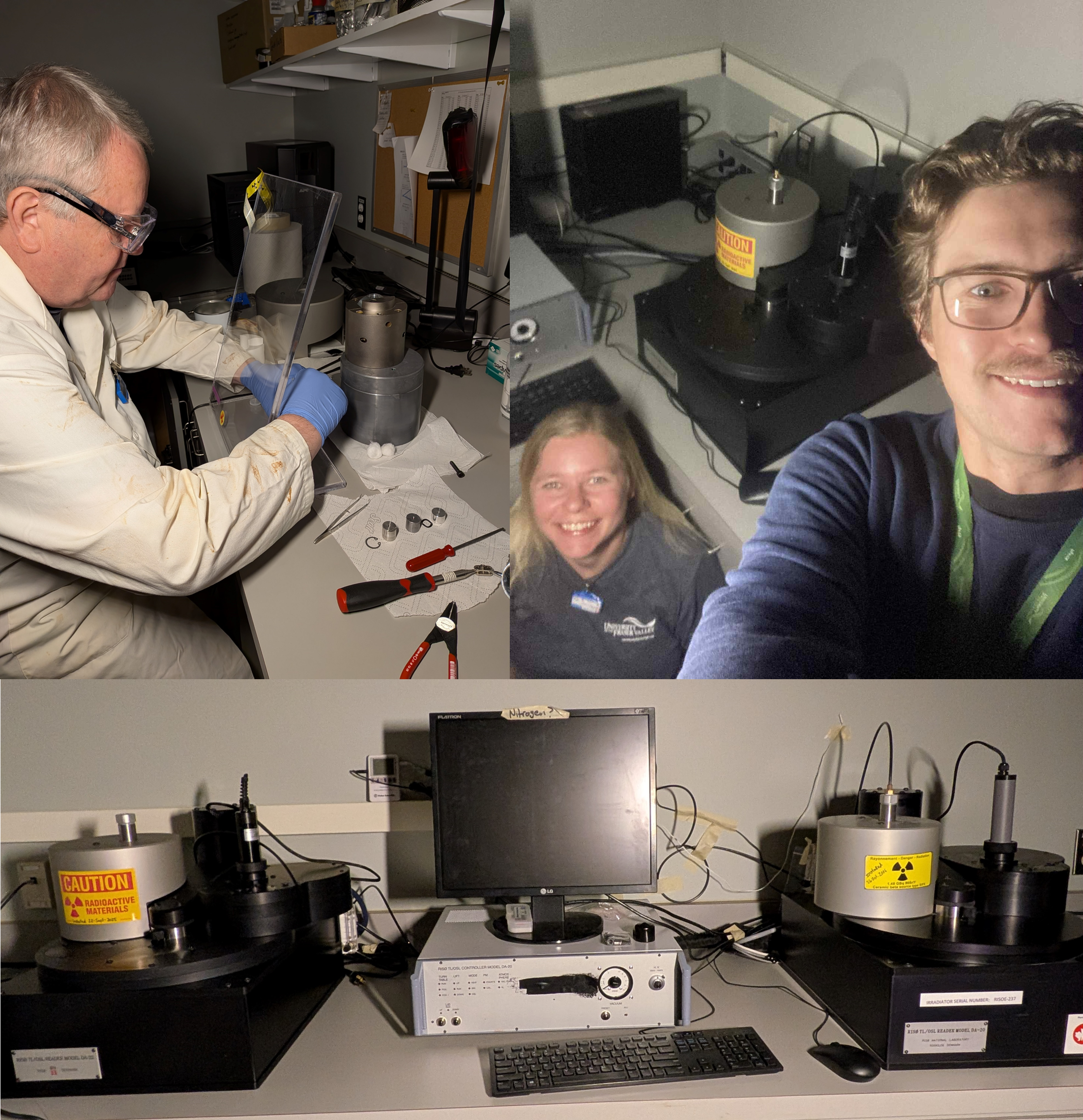
In August 2024, the Luminescence Dating Laboratory (LDL) at the University of the Fraser Valley (UFV) was awarded funding from the Canada Foundation for Innovation (CFI) to acquire a second Riso TL/OSL reader. This strategic investment was aimed at expanding the lab’s analytical capacity and supporting the growing portfolio of research projects. The new reader was delivered to UFV in August 2025.
With the successful installation of the new Riso TL/OSL reader, the laboratory has effectively doubled its measurement capacity, enabling the team to undertake a greater number of research projects. This enhanced capacity strengthens UFV’s role as a key contributor to Quaternary science, archaeology, and luminescence dating research in Canada and internationally.
On September 22, postdoctoral researchers Dr. Sam Woor and Dr. Maria Schaarschmidt, under the supervision of Lab Director Prof. Olav Lian, unboxed the new reader and removed the lead shielding designed to protect users from radioactive emissions. This step significantly reduced the unit's weight, allowing for easier placement on the designated laboratory bench. Once in position, Dr. Woor and Dr. Schaarschmidt connected all necessary power, data, and nitrogen supply lines. The installation of the radiation source, a critical component of the system, was then conducted by Prof. Lian and Dr. Schaarschmidt in accordance with strict safety protocols to minimize radiation exposure.
On the following day, installation of the instrument software commenced. Although initial challenges were encountered, the UFV IT department provided timely and effective support, resolving all technical issues and allowing the software installation to be completed by Thursday. The final step involved calibrating the new beta radiation source to determine its current dose rate—an essential measurement for accurately estimating the burial ages of sediment samples.
The Luminescence Dating Laboratory extends its sincere thanks to UFV’s Research Office for their instrumental role in securing the CFI grant, particularly Dr. Garry Fehr, Ash Lalani, and the rest of the Research Office team, with special thanks to Ryan Coreau. Gratitude is also extended to the Facilities and Logistics departments for their assistance with equipment delivery and setup, as well as to the IT department for their support in resolving network and hardware-related issues.

Sediment provenance, being able to trace where a grain of sand has originated from, is very important for discovering critical mineral deposits in Canada. This is because a lot of Canada’s important mineral deposits are buried under sediments left behind by ice sheets that formed during the last Ice Age. Scientists and mining companies need ways of reliably tracing sand grains back through these past ice flows to triangulate where important minerals originate from.
The Luminescence Dating Lab recently received funding from the Canadian Government to explore whether thermoluminescence (light emissions from quartz grains that are released by heating) can be used as a way of doing this. Quartz grains are abundant in the Earth’s crust, so they could be very useful sediment tracers. Sam visited the Luminescence Physics Group at the Technical University of Denmark (DTU) in Spring 2025 to carry out experiments on quartz grains extracted from a range of different rocks across British Columbia and Canada. DTU has a luminescence spectrometer – a tool that can measure the emission of light from quartz grains across many wavelengths as it is heated up, many of which are invisible to the human eye. The result is a 3-dimensional ‘fingerprint’ of the quartz grains, which are very distinct for each different rock type.
Whilst just a pilot study, these results look very promising for use in sediment tracing and we plan to expand this study by learning more about how the chemistry of different quartz grains controls the shape of these fingerprints.
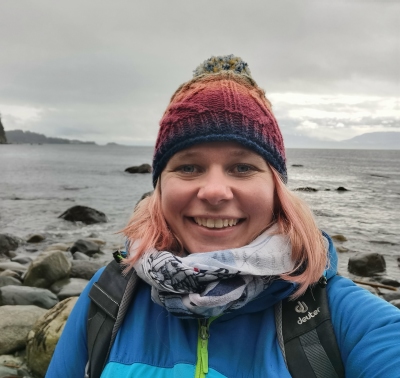
In August 2025, Maria attended the UK Luminescence and ESR Dating conference which was hosted by St Andrew’s University in St Andrew’s, Scotland. Over 2.5 days, many presentations on the application of optical dating to different contexts (geology, geomorphology, archaeology among others), advances in methodology and instrumentation, as well as new insights into the different luminescence signals of quartz and feldspars were given.
The conference dinner was held in the Lower College hall (one of those old timey fancy buildings they have in the UK) and featured a delicious 3-course meal including smoked salmon, chicken and vegetables and blueberry cheesecake. Following the dinner, everyone was invited to a Ceilidh (pronounced ‘Kay-lee’). A Ceilidh is a social event at which there is Scottish folk music, singing and traditional dancing. Tons of fun!
The next UK LED will be held in 2027 at Durham University.
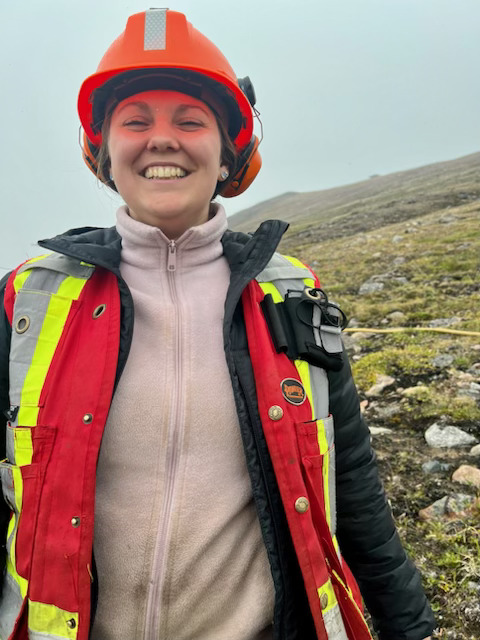
In May 2025, LDL and UFV alumnus Cassandra Shewchuk was elected Director for the Women Geoscientists in Canada organization. We congratulate Cassandra and wish her the best in this new role.
The Women Geoscientist organization advocates and promotes gender diversity within the geosciences. To find out more about the organization check out their website.

In late 2024, UFV’s LDL was invited to be a part of a research project which included the first all-Canadian research expedition to Antarctica in Spring 2025. Thomas James, a scientist for Natural Resources Canada, led a team of 15 scientists from different institutions and disciplines from across Canada to study the Antarctic Ice Sheet and the implications for sea level change, as well as environmental changes connected to a reduction in Antarctic sea ice, the ocean floor and contamination by microplastics in the sea water.
Thomas took several samples from beach ridges along the coastline of the Southern Shetland Islands off the tip off the Antarctic Peninsula which will be sent to UFV for luminescence analysis.
Read more about the project HERE.
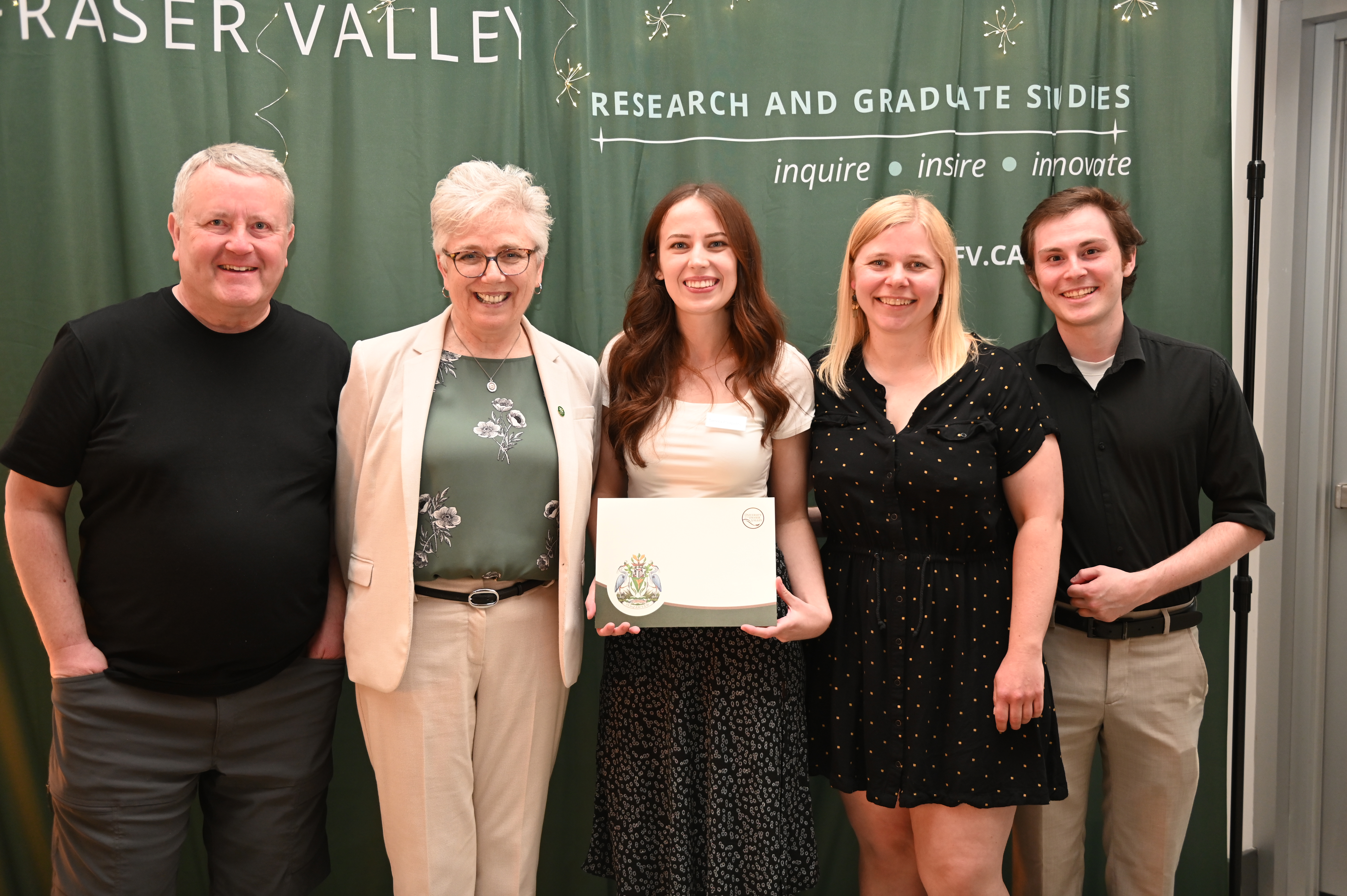
The Undergraduate Research Excellence Awards in Geoscience was awarded to Sierra Colpitts for her fantastic work on K-feldspars from the Thompson River Valley that she presented at Student Research Day at UFV.
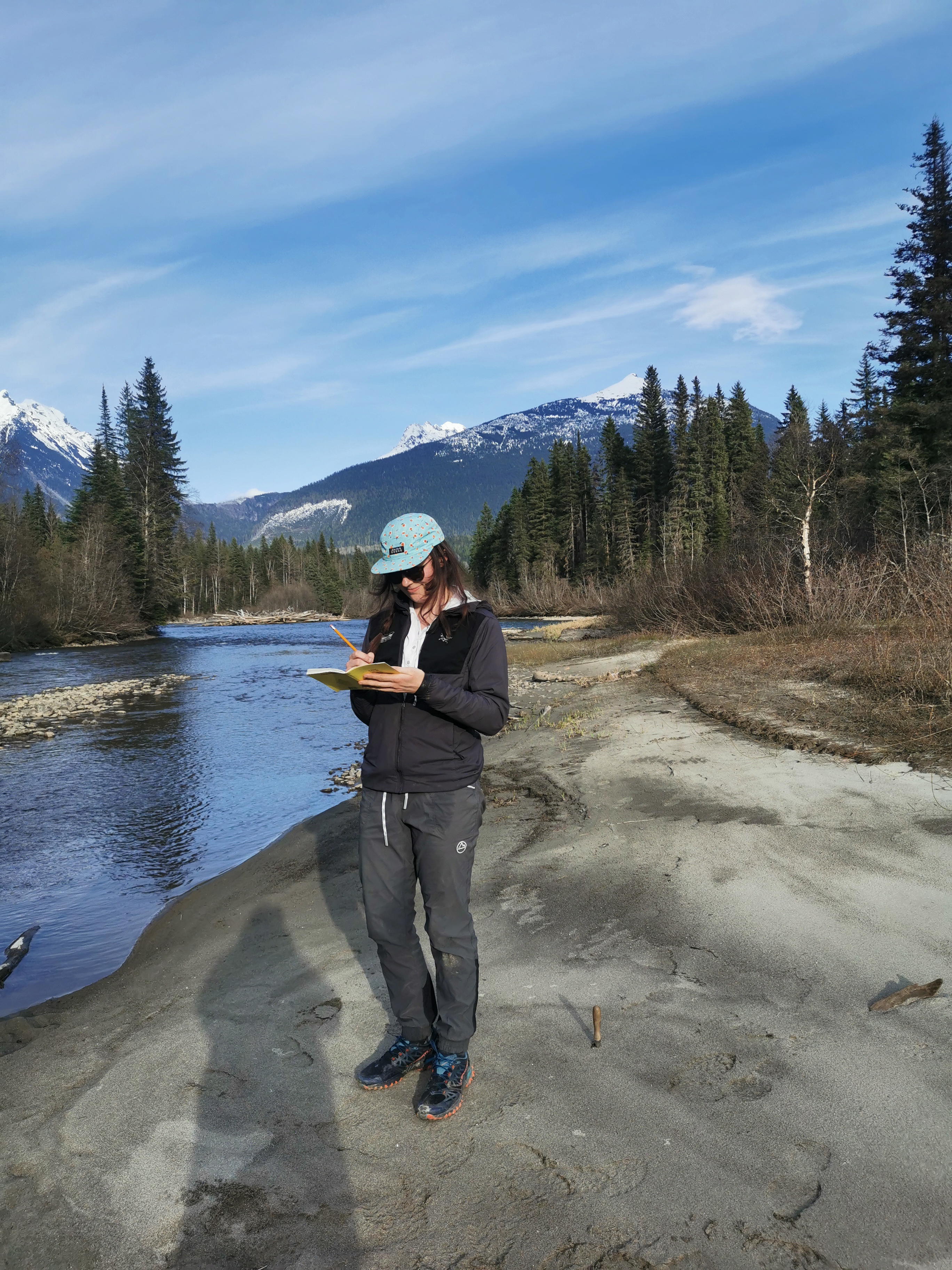
From April 25 to 29, our postdoctoral fellows, Sam and Maria, and our newest honours student Justine Stoeckly went out in the field to collect modern sand samples along the North Thompson River for Justines honours project. Justine’s project is investigating the relationship between the luminescence properties of modern sediment and the geomorphological characteristics of the river along its length. Being and active and outdoorsy person herself, Justine was super excited to get her first fieldwork experience and learn how to sample for luminescence dating. Before the trip, potential sampling locations were scoped out on Google Earth, leading to a map with 50+ possible stops.
On Friday, they started their journey to drive to Kamloops. First stop was the Blue Moose in Hope - a tradition that has to be honoured every time a fieldtrip goes out into the interior. After petting the moose for good luck and getting breakfast, they continued towards Kamloops. Before the end of the day, Justine had taken her first two samples from east and west of Kamloops Lake. Kamloops Lake plays an important role in Justines project as a major sediment sink for material transported down the North Thompson River.
On Saturday, the group set off towards Valemount and collected six samples from sandbars in the North Thompson River. Some locations were previously marked on Google Earth and were fairly easily accessible. Other locations required some bush whacking and parkouring over logs and branches. The scenery also did not disappoint.
Sunday started off with an early breakfast and bakery visit in Valemount. First stop was slightly further north at the Fraser River where Sam collected a sample for his project and many cool rocks were collected (and smashed). On the way back to Kamloops Justine took four more samples. The official end of fieldwork was celebrated over refreshing drinks at Brown’s and a friendly, but competitive game of Scategories (Maria won).
Justine, Sam and Maria returned to Abbotsford on Monday with ten brand new samples for Justine's honours project, many great photos and good memories of fieldwork in the interior.
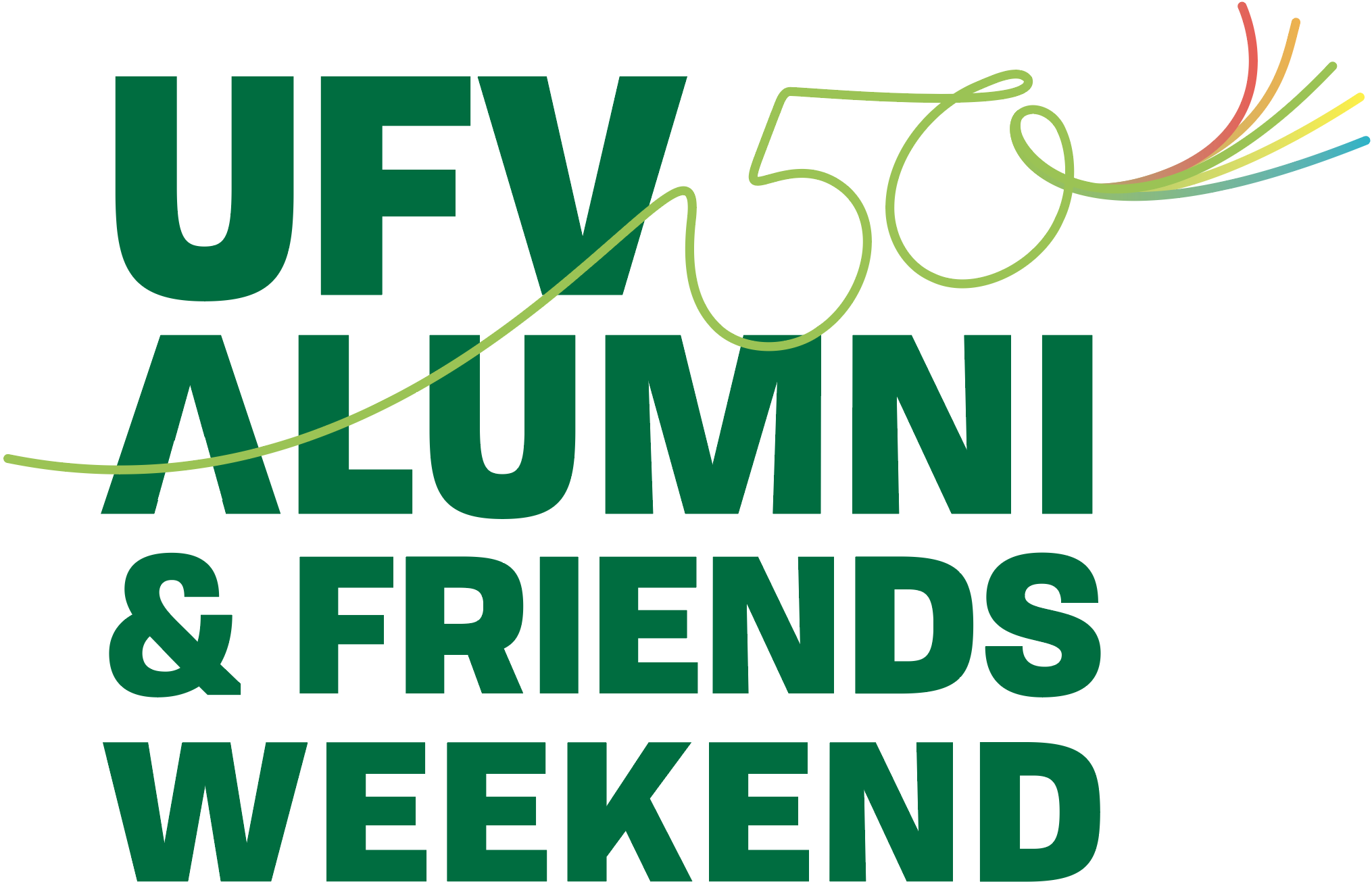
On April 5th, 2025, UFV held the first annual alumni day at UFV to celebrate 50 years of UFV. The team at the luminescence dating lab joined the celebrations by opening up the lab for tours and showcasing the exciting research done by past and present students, as well as our postdoctoral fellows. Interested visitors were able to experience the unique environment inside the lab and past students were reminiscing about the time they spent in the lab preparing samples. With the help of current and past lab assistants, Sierra and Alison, visitors could get a glimpse of our research in British Columbia, Canada and worldwide.
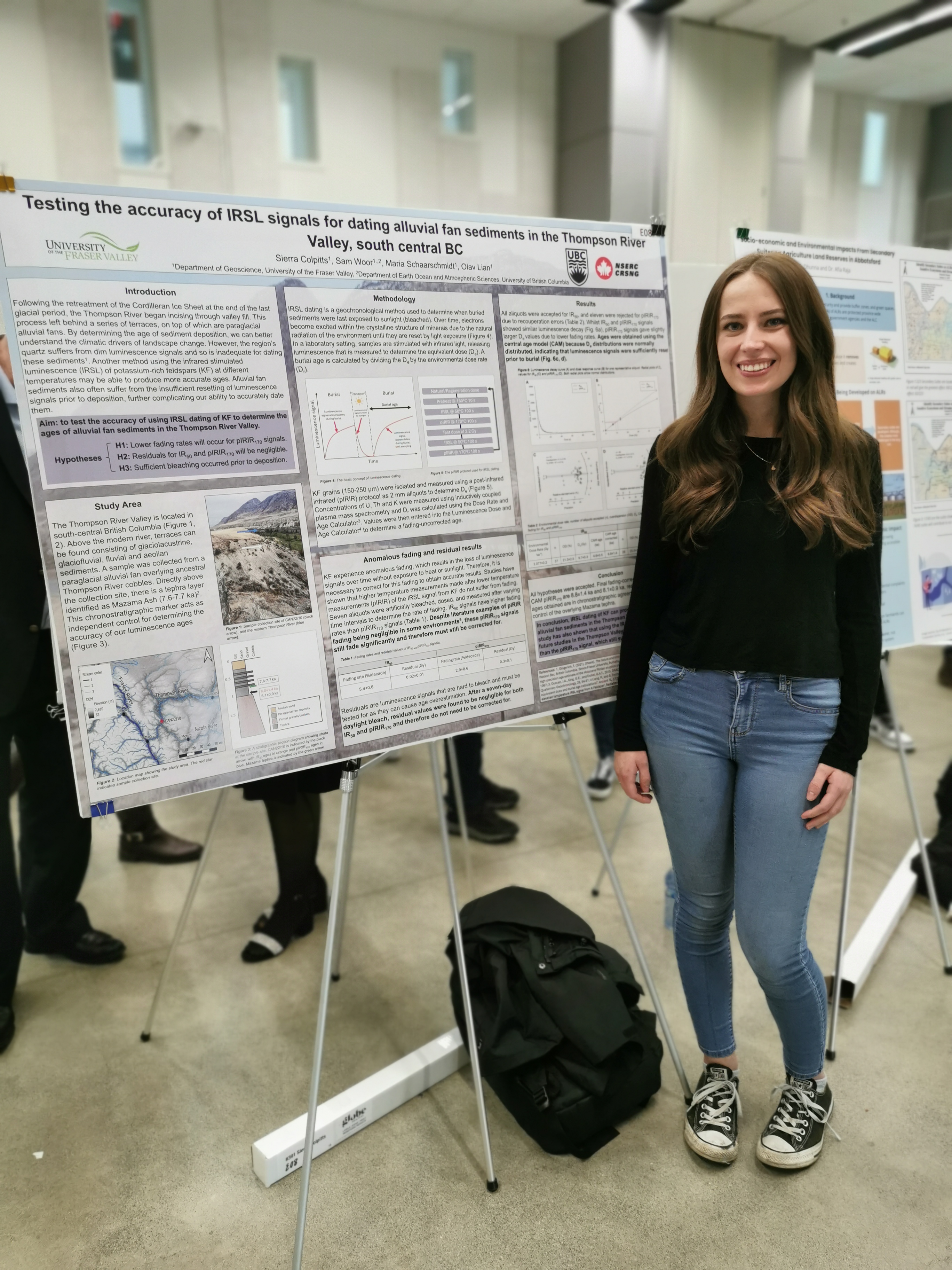
Every year the Research Office at UFV organizes Student Research Day where student have the opportunity to present research they have undertaken that semester – either in form of a poster or a 2-min microlecture. Sierra Colpitts presented her project for which she analyzed different luminescence signals of a potassium-rich feldspar sample from the Thompson River, BC.
You can find her poster pinned on the poster boards in the hallway outside the luminescence dating lab (Abbotsford campus, Building A, 4th floor).
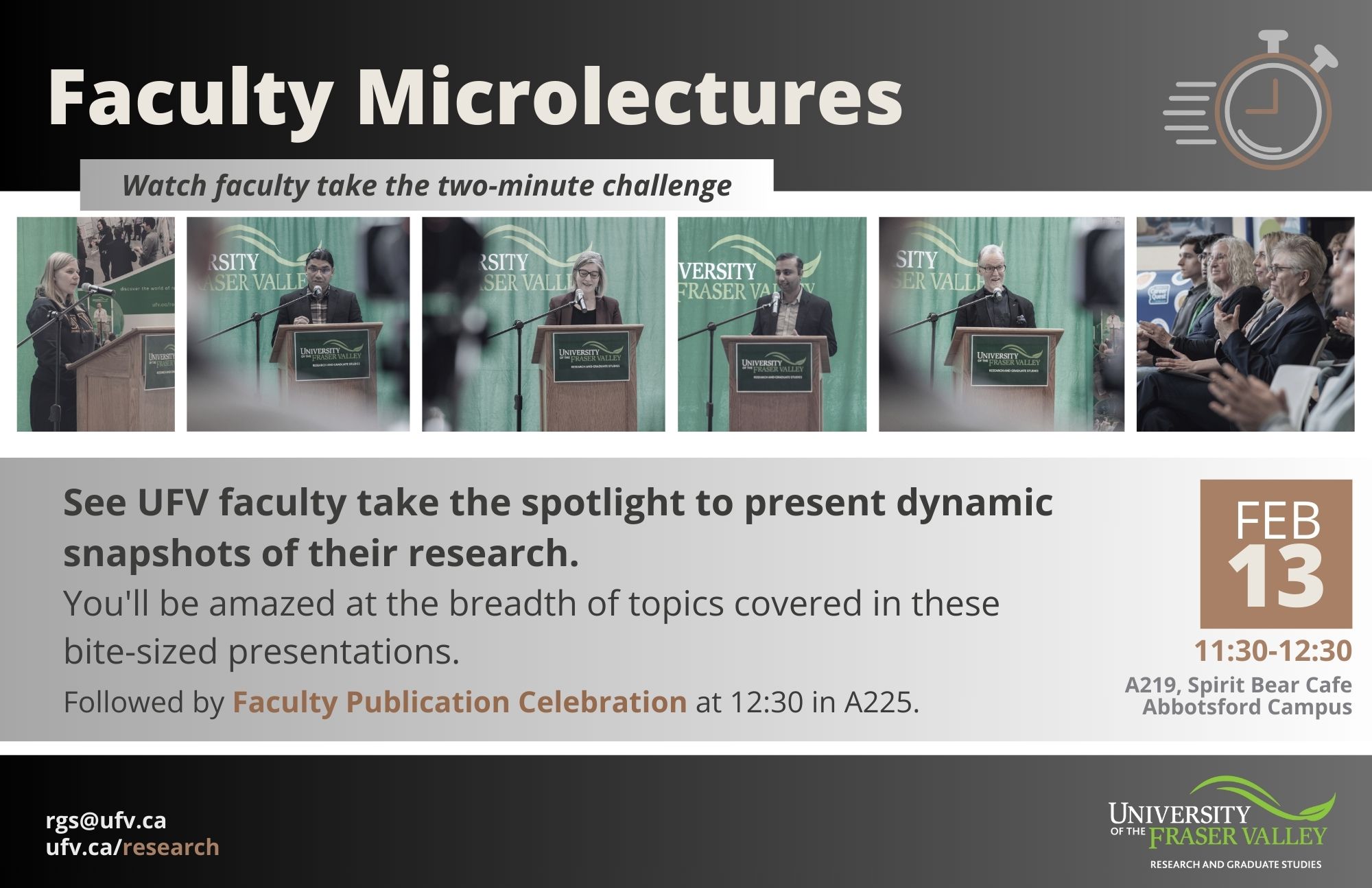
Every year the Research Office at UFV organizes the Faculty Microlectures event where staff and faculty can present their research in a 2 min presentation to an audience. This year both our postdocs, Sam and Maria, participated and presented their recent work.
Maria opened the event with a broad overview of what can be achieved with luminescence dating and how collaboration with other researchers, departments and disciplines can enhance the quality of the research conducted by looking at problems from different angles. She explained how luminescence dating can give very detailed answers to research questions and can support the results from other investigations (exp. geology, sedimentology etc.).
Sam presented his latest project where he is investigating the rate at which river channels migrate across their floodplains. River migration rate is a key control of how long sediment is stored in floodplains for as it travels on its journey from where it is formed in mountainous areas to where it eventually ends up on the ocean floor. How long sediment is stored for before it is eroded by the river controls the timescales over which chemical weathering to occur, which has important impacts for the carbon cycle. Sam’s project is seeking to decrease the time and cost of dating river sediments so that scientists can make quicker assessments of long-term migration rates and sediment storage timescales. Currently, he is working on the Nordenskiold River in the Yukon, with plans to expand this work to other systems.
Both presentations are uploaded on the Research Office’s YouTube channel.
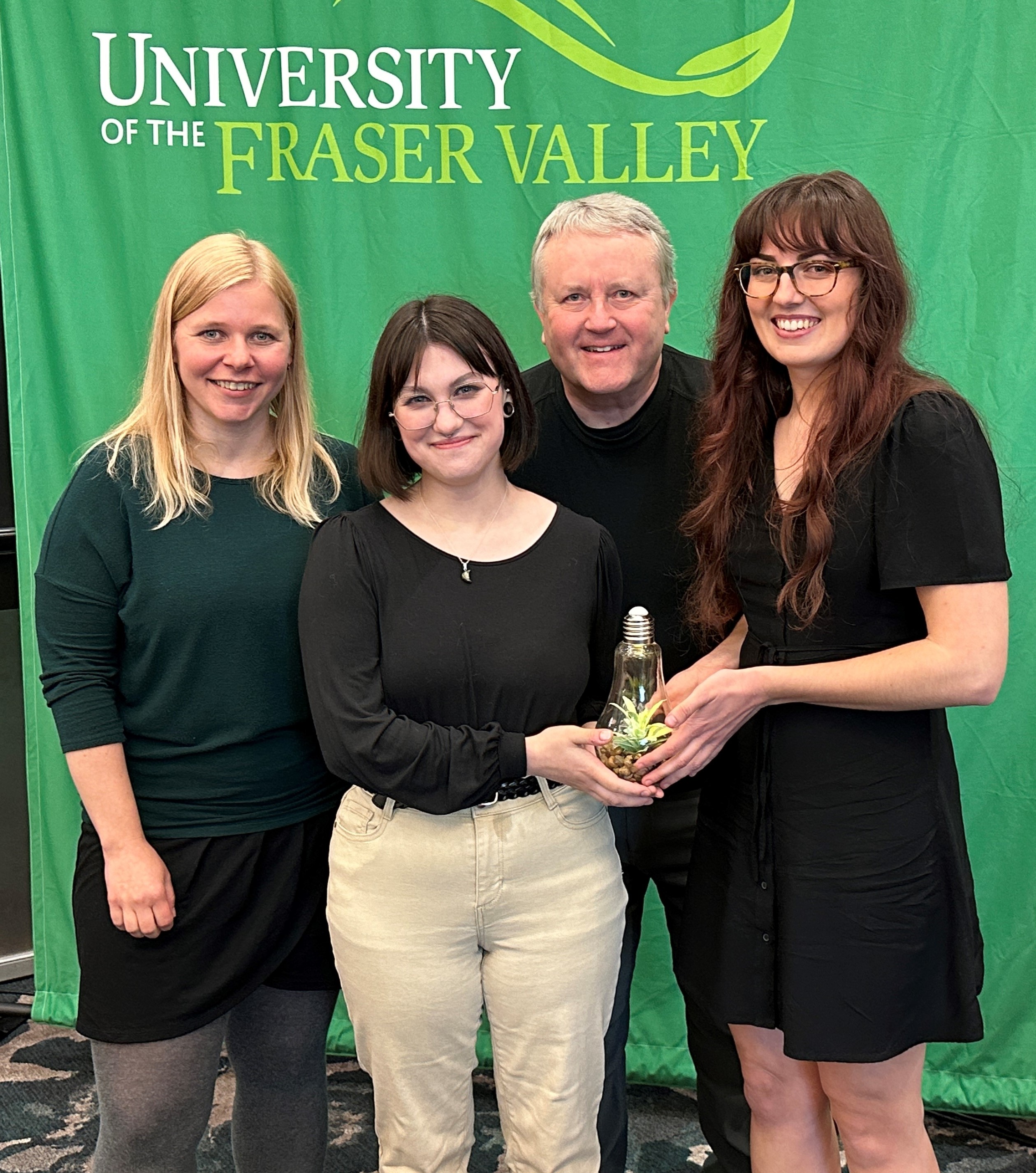
At this years’ Undergraduate Research Excellence Awards, two of LDL’s students, Nicola Ferguson and Justine Stoeckly, were presented with awards for their outstanding research in the Department of Geoscience which they presented at Student Research Day at UFV and at the Conference of the Canadian Quaternary Association in Regina, Saskatchewan.
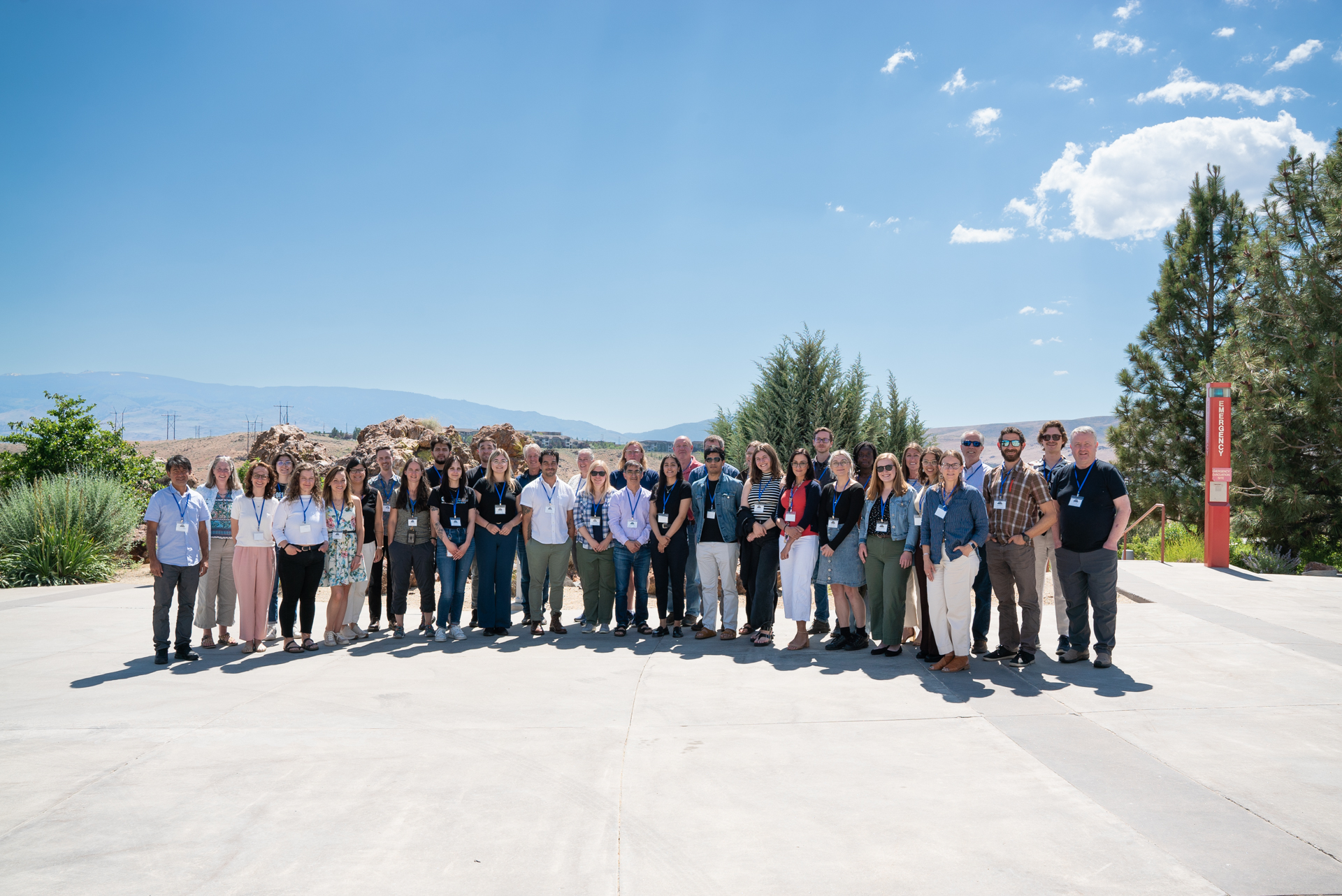
In June 2024, Director Olav Lian was invited to the New World Luminescence Dating Workshop at the Desert Research Institute in Reno, Nevada, as a keynote speaker. He spoke about how our field has changed since its’ inception in the early 1980s, showed pictures of instruments the younger generation of the luminescence community has probably not seen before and shared anecdotes of colleagues and friends he met along the way.
Postdocs Sam Woor and Maria Schaarschmidt also travelled to Reno to present their current research to the Luminescence community. Sam talked about estimating environmental dose rates for trapped charge dating using rapid geochemistry and Maria shared her work on the characteristics of quartz luminescence signals of samples from central Canada.
During the workshop, they also celebrated the 30th anniversary of the Desert Research institute. The conference field trip took them to Lake Tahoe in California where they learned about the regional history (geological and historical) and current research being conducted there. They also caught up with former LDL postdoc Christina Neudorf.
The Desert Research Institute is one of our project partners. Check out their website for more information about them.
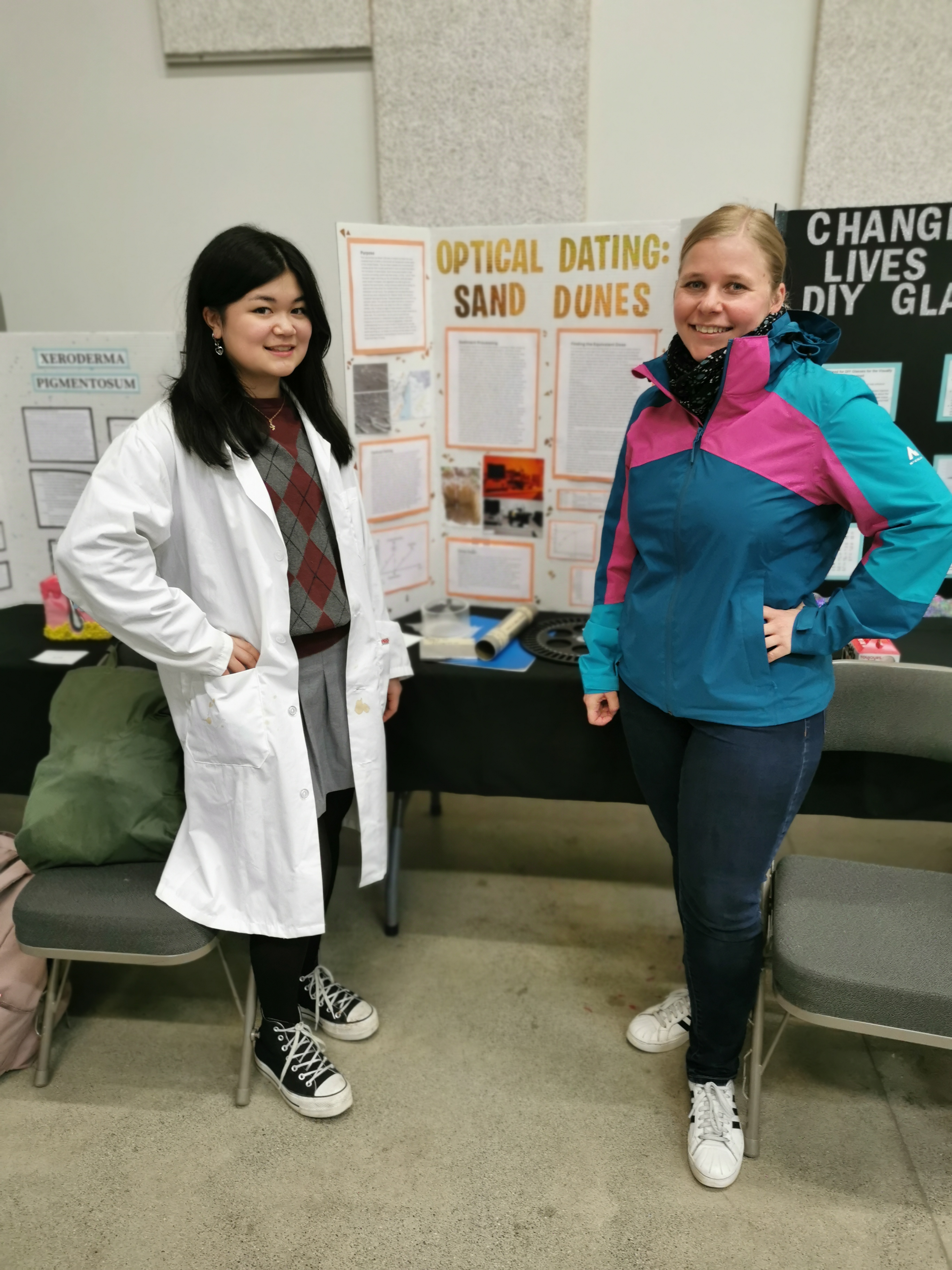
At the end of 2023, the LDL was contacted by a student – Xauni de Figueiroa. She was interested in participating in the Fraser Valley Regional Science Fair in Apil 2024 with a project centered around luminescence dating. After meeting her and seeing how engaged and enthusiastic she was, they agreed to help her with a project.
Xauni prepared two sediment samples from the Pine Barrens in New Jersey, USA, and extracted quartz grains to eventually estimated a burial age for her samples. These samples were part of a bigger project about dune-field mobilization and stabilization near the maximum extent of the Laurentide Ice Sheet. Xauni presented her project at UFV together with fellow student researchers. Her project was successful, and she advanced to the National Science Fair in Ottawa, where she enjoyed presenting her research among her peers.
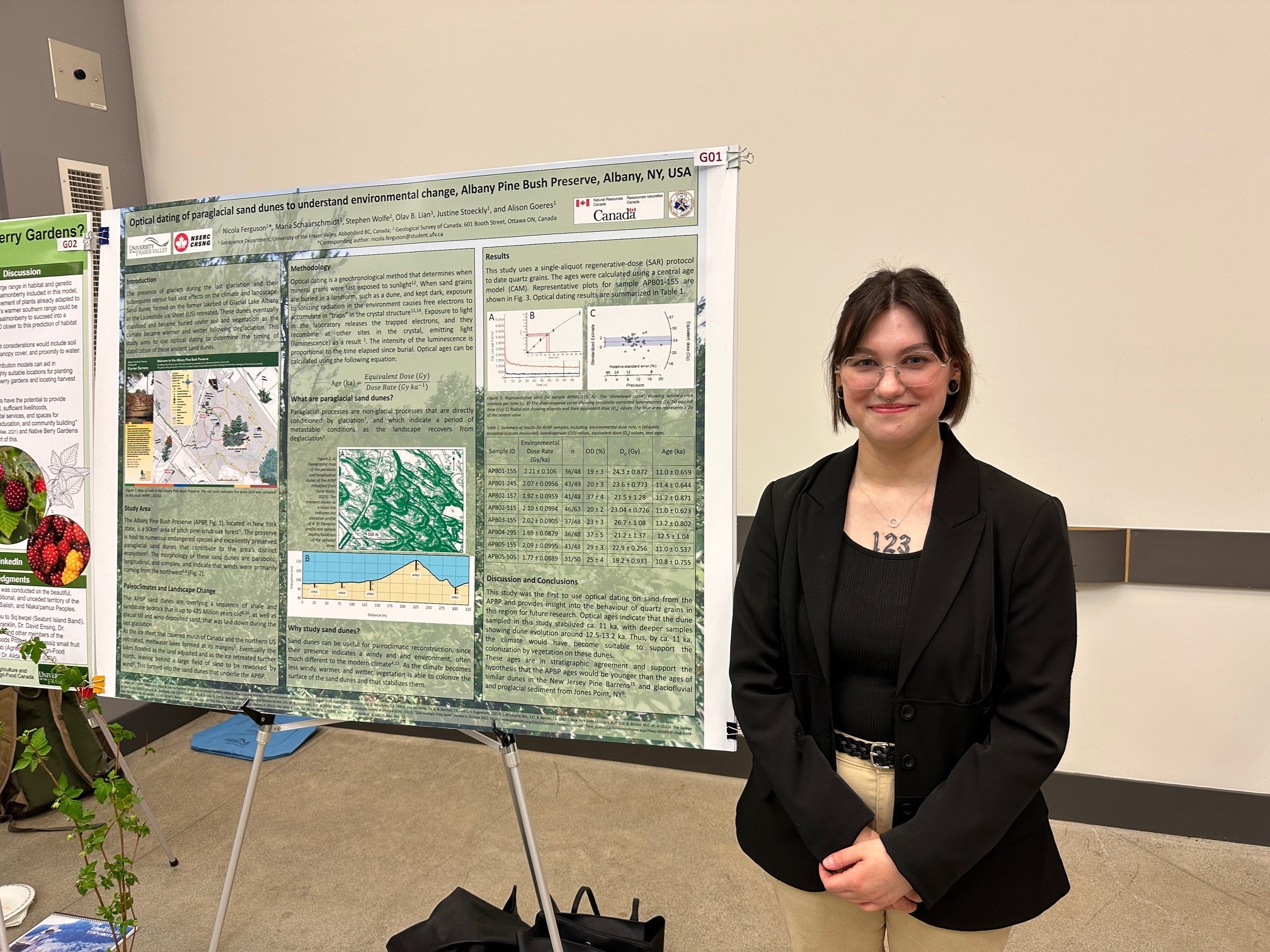
In 2024, Nicola Ferguson participated with a poster showcasing her research in the Albany Pine Bush, New Jersey at UFVs Student Research Day. She explained to visitors how luminescence dating works and how it can be used to determine the time of stabilization of sand dunes.
You can find the poster pinned on the poster boards in the hallway outside the luminescence dating lab (Abbotsford campus, Building A, 4th floor).